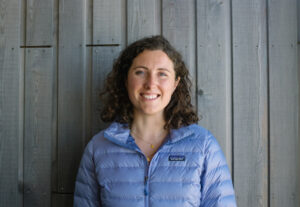A few days before the start of the UN Climate Change Conference in the UK (COP26), I couldn’t believe my eyes.
The United Nations Development Programme (UNDP) posted a video of a dinosaur entering the General Assembly to warn humans of the risks of climate change and encourage an end to fossil fuel subsidies.
This was a surprisingly bold and direct statement, unusual for the consensus-based UN organisation, and the use of a dinosaur was something totally out-of-the-ordinary.
My curiosity was piqued, so I got in touch with Boaz Paldi, Global Engagement & Partnership Manager at UNDP and Manager of the #DontChooseExtinction extinction campaign, to find out more.
We discussed the creative process that led to the campaign video, as well as the various elements and calls to action that are helping to build a community of engaged climate activists.
The result is unique insight into new campaign tactics to creatively shock and engage new audiences into action.
Q. What was your initial reaction when someone suggested that a dinosaur enter the United Nations General Assembly?
Initially, our creative agency Activista worked on background preparations for the campaign, speaking to all the stakeholders and brainstorming various concepts. Then they came back to me and said that they had three ideas.
“You’re gonna like one of them,” they said.
Then they presented the dinosaur idea first, and my response was a resounding “Yes”.
The concept works on so many levels. It represents a striking image, a combination of absurdity and humour… I agreed to it right away, not realizing what I was getting myself into at that point, but it was immediate.
The other two ideas were fine, and if it wasn’t for the dinosaur idea, they might have been okay, but it was so overwhelmingly obvious that we needed to do the dinosaur.
Q. In today’s competitive media environment, would you say that something as shocking as a dinosaur is needed to break through the noise?
I think that’s exactly the success of the campaign. We were very lucky to have incredible production value on this project, and the dinosaur truly seems real when he walks into the United Nations General Assembly and gives a speech.
First of all, it’s funny! The dinosaur is called Frankie the Dino, and the whole idea is so absurd that you’re immediately captured by it.
Sometimes the best way to talk about a serious and complicated issue is to break out of that mode and do something completely different.
After all, we’re talking about fossil fuel subsidies. It’s a complicated, difficult issue. Very few people really understand it in the general public. We realised that we needed something that would break through that clutter, and the way that we thought about it was to do something absurd and humorous, and that’s the basis for Frankie’s success.
Sometimes the best way to talk about a serious and complicated issue is to break out of that mode and do something completely different.
Boaz Paldi Tweet
Q. What were the key elements and the main platforms of the campaign?
The idea started with the fact that there is a singular issue in the climate emergency that needs to be dealt with: fossil fuel subsidies. It’s not the only issue, but it’s a very, very important issue, and UNDP decided to tackle it.
Once we decided that we wanted to focus on the issue of fossil fuel subsidies, then we needed to find a way to reach people. We believed that the dinosaur was a way to reach new audiences, but we didn’t want it to be an empty campaign. We wanted it to be meaningful.
So we started layering the campaign elements. What is the call to action? How are we going to use that call to action? How are we going to ask people to join and be motivated? We agreed that we wanted to reach as many people as possible and that we needed multiple actions. We wanted a host of different actions that could help us reach what we refer to as “the silent middle majority”.
We’re not trying to reach the Greta Thunbergs of the world, and we’re not trying to reach Trump supporters that think that climate change is a Chinese conspiracy, because we’ll never reach them. We are targeting the silent majority in between.
We estimate that 80% of the global population is in the middle on this issue: they believe in climate change, but they are not really speaking out or doing anything about it. So we wanted to motivate that middle silent majority to take some kind of action, any kind of action. Perhaps only to share the film, or vote in a poll, or join Mindpool or buy The Birds and The Bees children’s book.
We were very lucky to have an incredible creative agency that developed the dontchooseextinction.com website for us called Wunderman Thompson. They helped to develop numerous calls to action, while on the other hand we developed Global Mindpool, a platform to build collective intelligence on this issue.
People know what they want, what they can do, what can work and what won’t work. So we wanted to give them an opportunity to outline their thoughts and to express them directly to the United Nations. Our idea is to gather this data, pool minds from people around the world and build a collective intelligence with the goal of presenting this vision of a sustainable future to policymakers.
So that’s why we built the campaign in so many layers, with so many different actions. All of the actions were built like a funnel, so whatever action you take, you are encouraged to join Mindpool at the end. And that’s really the ultimate call to action of the campaign.
All of the actions were built like a funnel, so whatever action you take, you are encouraged to join Mindpool at the end. And that's really the ultimate call to action of the campaign.
Boaz Paldi Tweet
Q. At this point, what would you say has worked best to drive results for the campaign?
We’ve seen a very good conversion rate from views to the website, and we’ve had a very good engagement rate from the website to Mindpool, and directly to Mindpool through various other methods.
But we see it as a long-term engagement rather than a flash in the pan. We are now in the midst of fully incorporating the campaign into everything that we do in 2022, all the way leading up to COP27 in Egypt. It’s going to be a continuous journey. We’re going to continue pushing people towards Mindpool, using the key messages and themes of the campaign throughout the year in order to build that impact over time.
Hundreds of thousands of people are taking part. People in over 172 countries have taken part in the first survey. We’ve got millions of views, millions of unique users of the website, so it definitely worked.
If we were to do it again, there are certain things that we would amplify more, that we would jiggle, that we would make it a little bit stronger, but overall it worked. We reached the level of engagement we had hoped and the views of the film itself went far beyond what we anticipated: it has been seen by over 1 billion people across the world!
The film has truly gone viral, even in countries that we didn’t reach out to, so it was all very organic.
For instance, we know that in Saudi Arabia it was a huge hit on WhatsApp. We didn’t do any outreach in Saudi Arabia at all, yet it was very, very prominent there. We know this from anecdotal evidence, because people from Saudi Arabia were calling us and sending us their messages. We can also trace the global impact from analytics of the website and the demographics of the people who voted in Global Mindpool.
Q. What was the impact of other channels like cinema or even getting Frankie to participate in climate change protests?
We never imagined this to be a digital-only campaign. What we wanted was to get as many views as possible of the film and to encourage as many people as possible to take action. So we created media partnerships that were far beyond social media.
For instance, we have a partnership with MultiChoice Africa, which is the biggest cable provider in Africa, and they’re screening the film multiple times per day on all of their channels. That helped us to get about 340 million people to see the film. In China, we were able to get it on both CCTV and Weibo. This combination of TV and social media visibility meant that one in every four Chinese people saw the film, resulting in over 300 Million views.
We also developed out-of-home partnerships such as a cinema deal, which is just beginning.
Initially, we showed the film in a few cinemas and got a great response. In Nepal it was shown in every cinema available, as well as in the Nordics and in Bangladesh. We are now expanding this and launching the second part of the cinema campaign: starting this February, the film will be shown in almost every single cinema around the world for about eight weeks.
Our goal was to manifest this campaign in as many ways, in as many formats as possible. What drove us prior to the launch was a desire to tap into popular culture.
We asked the question: “How can Frankie become part of popular culture?”
We tried to design it so that it would become a meme and could easily be copied and become part of popular culture, and that’s exactly what happened. I can’t exactly explain how it happened. A famous French-language cartoonist used Frankie and Greta in her cartoon on the day COP26 started, and many other cartonists followed. That’s popular culture. We know that people are even making t-shirts of Frankie all over the world that have nothing to do with us, for example. The film itself was used in a million ways, so it truly became part of popular culture in many ways.
Our goal was to manifest this campaign in as many ways, in as many formats as possible. What drove us prior to the launch was a desire to tap into popular culture.
Boaz Paldi Tweet
Q. Apart from well-known voice actors like Jack Black, Eiza González, Nikolaj Coster-Waldau and Aïssa Maïga, did you recruit influencers for this campaign?
We had an influencer strategy that was far and wide. A team that was focused only on influencers and they worked with a specific agency that was helping us to recruit and engage high-profile personalities to help amplify our message.
And then we had our UN Goodwill Ambassadors. They’re part of the family and we were relying on them very heavily to push the message out. We developed strategies with them, scripting and carefully planning out their participation in the campaign.
We also developed segmented strategies for micro-influencers, with differentiated approaches for those with less than 10,000 followers, those with 10,000 to 100,000 followers, and those with 100,000 to a million followers. Each segment had a different approach, but we pushed them all out all at once.
We built some extremely good partnerships that helped us with influencers. One of the great partnerships that we had was with PVBLIC, which is an incredible foundation that helps the UN in various ways. They have their micro-influencer network that was helping us to push out the message. Another one was We Don’t Have Time, a Swedish climate change organization that works with their own micro-influencer community, and they supported us massively in preparation for the launch.
These partnerships with entities that have networks outside of UNDP’s circle helped us to massively push out our message using numerous coordinated micro strategies. We built the assets, everything that everyone needed to go out at the same time and make a big bang. We had the micro-site, all the assets translated and the film dubbed in over 60 languages in time for the launch.
Everyone could use it in their local way. For instance, the film was dubbed in Swahili and thanks to this it became a huge hit in Kenya and was shared by multiple influencers there.
Q. Campaigns like “Don’t Choose Extinction” and movies like “Don’t Look Up” illustrate a growing frustration with the slow progress on climate change. Is this a sign that traditional communications just doesn’t get through to the general public or to policymakers?
I think that’s exactly it. We’ve tried in every way to explain the climate emergency and to drill into IPCC [Intergovernmental Panel on Climate Change] reports by showing how scary they are, but that doesn’t work. It simply doesn’t cut through.
People are not taking notice of IPCC reports. They don’t relate to them. So what we need are new ways to reach people. We need people to realize that something is going on and that they need to look up and take notice. And a dinosaur is one way of getting their attention. It’s a funny, absurd way to help people see the big picture.
We need new ways to reach people. We cannot continue just saying things into the void, without a fresh strategy on how we reach audiences.
That’s the key here: reaching new audiences is essential for the fight against climate change. You and I are convinced and we’re going to do everything we can to save the planet, but we need everyone else to do it as well, or at least the majority of people. It’s really a numbers game.
Partnerships with entities that have networks outside of UNDP’s circle helped us to massively push out our message using numerous coordinated micro strategies.
Boaz Paldi Tweet
Q. Overall, would you say that the campaign met its objective? The language in COP26’s Glasgow Climate Pact was not as ambitious as many people had hoped, with countries agreeing only to “accelerating efforts” on the phase-out of “inefficient” subsidies…
I think almost everyone was disappointed by Glasgow, I think it’s the political reality of this world that many of us will be disappointed by these conferences. Yet COPs are just moments in time where the spotlight shines on climate change.
What we need to do is to communicate on these issues every single day. We need to push on all levels, with all the levers that we have, and the work can’t stop. The work is essential for the survival of humanity, for the survival of the earth. We need to solve these multiple problems right now, there is simply no more time.
Building coalitions, building partnerships, building the idea that we’re working as a global community and solving these issues together – this is the fundamental success of the campaign.
Q. You also lead The Lion’s Share, a fund that seeks to create a new source of funding for wildlife populations by asking brands to contribute 0.5% of their media spend whenever an animal is featured in their adverts. What is the role of the private sector in all of this?
It is absolutely essential that the private sector be part of the conversation.
The UN is working to partner with the private sector on all levels to help them go as green as possible. It is not possible for everyone to grow green at once – there are supply chain issues, there are politics and many other barriers – yet trying to get the business community to get involved is the first step.
We should try and make it as simple as possible for companies to take positive action on the environment. I think the Lion’s Share is a great example of that. It’s a brilliant idea to get companies to understand that they can contribute to help save biodiversity around the world, particularly in light of the massive biodiversity crisis that we’re facing. It acts like a virtuous gateway: companies who’ve joined the lion’s share are gradually more and more involved in other environmental projects and initiatives.
And it’s the same with people. Take one step, do one positive thing, then do the next action and then the next, and all together we can get to a point where we are green enough to continue on a path that will build a better future for all of us.
For more insights see the DontChooseExtinction end-of-year campaign report as well as this extensive article by Forbes Magazine. The full campaign toolkit can be found here.
Latest blog posts

Exploring the AGILE Framework
In an interview for the Stories & Strategies podcast, I explain why agility is essential to succeed in today’s digital landscape.

Top 5 Proven Communications Strategies To Fight Disinformation
Strategies every communications leader should consider to prevent disinformation, complete with real-world examples and case studies.

How Patagonia’s digital advocacy campaigns are driving real-world impact
Find out about Patagonia’s approach to digital advocacy in this interview with Digital Community Manager Lauren Henshaw.

